Reading the news that the orca of Europe are being slowly poisoned and that following the recent death of Lulu there are only 8 now known to live in British waters made me think about all the wonderful whale and dolphin sightings and encounters I have been lucky enough to have. Most of my meetings have been in North America and have ranged from a splendid BC Ferry journey down the Inside Passage accompanied by Pacific White-sided dolphins to a schooner in the Haida Gwaii watching a humpback bubble net. Small boats, big boats and yes even from dry land, these beautiful beasts can be seen in abundance in Canada and the US. Standing on the shore, or better still enjoying a picnic on the cliffs of Newfoundland or California, you are quite likely to be able to see humpbacks or porpoises enjoying their lunch.
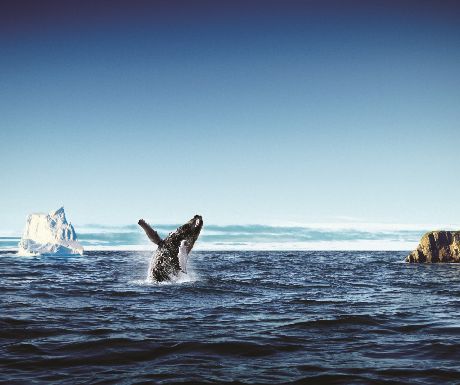
You don’t even have to travel far from a city; on a day trip from Quebec City you will be able to see the “canary of the sea”, the beluga as well as possibly a vast and rare Blue or sperm whale. From Boston you might see minke, pilot and even the endangered right whales whereas on the other coast just a few minutes from Victoria, BC you are guaranteed to see orca or you will get your money back. Let’s look at some of the whales and the opportunities to see them. Since they are in the news, I will start with the orca. The Orca, or killer whale, is one of the easiest to see. They are sociable, live in groups or pods and are often found nearland. As I mentioned, during the season which is at its best from July to late September, the Victoria whale watching firms will either give you a refund or a free trip if you fail to see orca during the three hour cruise. You don’t even have to get wet although you can if you wish. There is a choice of vessels; either a speedy zodiac which is a rigid inflatable boat which skims across the seacreating a great spray or a comfortable cruiser with seated viewing areas and a large warm cabin. for the more adventurous, you can kayak with the whales which gives a totally different perspective of these magnificent creatures. This usually involves a three day stay in a permanent camp in the Broughton Archipelago which has some of the greatest concentration or orca anywhere on the planet.
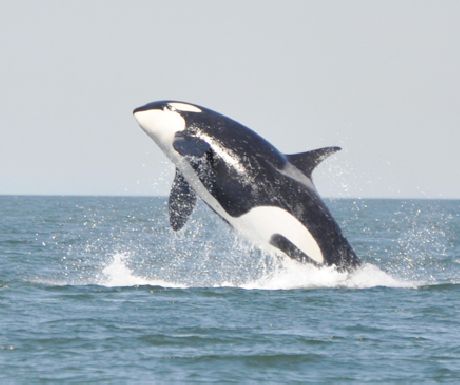
Humpback whales are widespread in both the Pacific and Atlantic Oceans. Like many whales, they are migratory animals but fortunately for us, they are around North America during our summer months. As so often with wild animal watching, your level of interest will determine how you see them. At the pinnacle is a whale study week; at the base a 3-hour excursion from any number of coastal towns from St. John’s NF, via Boston to Los Angeles, California. Seeing a humpback whale breach is an astonishing sight. How these enormous creatures weighing around 30,000 kgs get themselves completely out of the water is unbelievable, the fact that they can keep this weight up by eating tiny fish, shrimp and plankton is phenomenal.
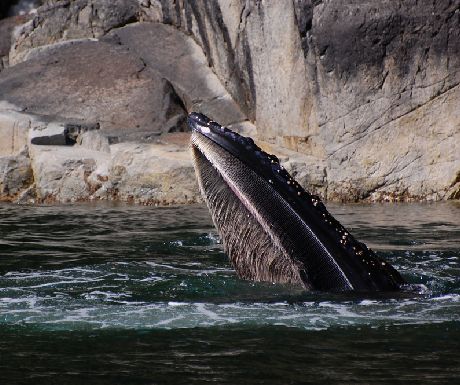
From the vast humpback, let us now look at the beluga, not the sturgeon that gives us caviar but the relatively small white whale; known as the sea canary because of its high pitched twitter, the beluga is an Arctic whale differing from all other whales both in its colour and the fact that it does not have a dorsal fin. This is apparently so that they can swim under the ice. They are very social creatures often congregating in groups of 10 or more and can be found in the St. Lawrence River during the summer months. This is very convenient for us as we can enjoy all the comforts of Quebec City and the wonderful sights and food of the Charlevoix region with a three hour whale watching excursion from Tadoussac. However, if you want to get up close and personal with them, you can actually swim with them in the Arctic Ocean.
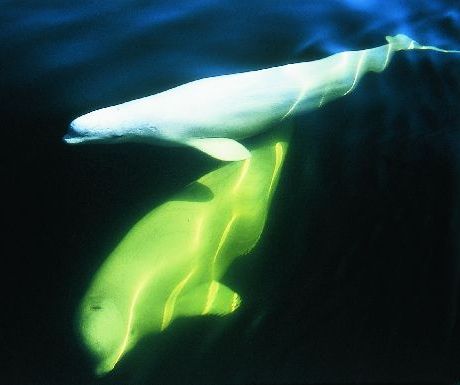
Gray whales migrate more than 12,000 miles every year between Hawaii and Alaska each year and you can catch them (figuratively speaking) anywhere along their journey or, of course, at either end. I have often seen them travelling off the west coast of Vancouver Island at my beloved Tofino. One of the most reliable places to watch the gray whale is in Magdalena Bay where between late January and mid March, they calve. Aboard one of Un-cruise’s luxury boats you will probablysee sea lions, snorkel among a wealth of colourful fish and explore Baja California as well as watch these magnificent beasts.
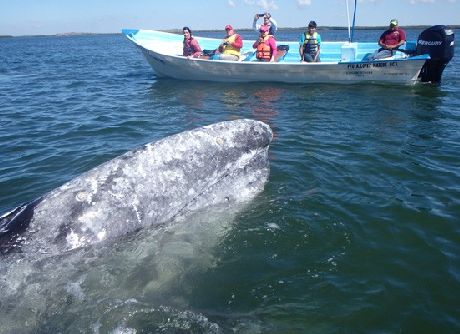
In the vast oceans, spotting a whale has to have an element of chance, but at least you know some of the best places to try. Good luck.